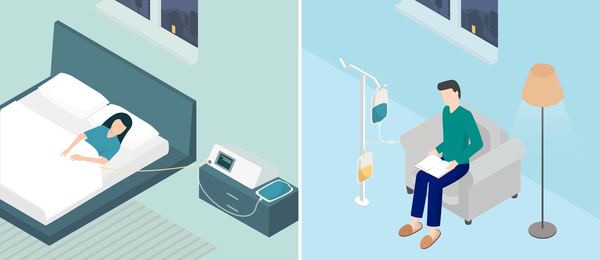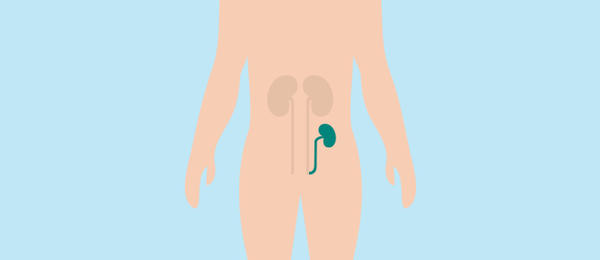In-centre haemodialysis
In-centre haemodialysis (in-centre HD) is a therapy option that filters your blood outside your body using a haemodialysis machine and a manufactured filter, called a dialyser. Here you can learn more about in-centre haemodialysis (in-centre HD).
What is in-centre haemodialysis (in-centre HD)?
Haemodialysis (HD) is a type of dialysis that filters your blood outside your body using a machine and a dialyser, which is a manufactured filter that acts like an artificial kidney.

How does in-centre haemodialysis work?
If you are treated with in-centre HD, you will typically travel to your hospital or dialysis clinic 3 times a week to receive 4-5-hour treatments each time, depending on the dialysis schedule your clinician has recommended. There, you will be taken care of by a nurse or clinician throughout your treatment.

Choosing a type of in-centre haemodialysis
If you and your clinician decide that in-centre haemodialysis is the best treatment option for you, you may be able to choose between receiving in-centre treatments during the day (daytime HD) or, in some cases, receiving them at night (nocturnal HD). Daytime HD is the most common choice of therapy and is the most likely to be available to you. Your sessions will be scheduled at a time that fits your hospital or clinic. Days and times for therapy will be allocated depending on available spaces.

Preparing for in-centre HD
Before your in-centre haemodialysis treatments start, you will also need to have a surgical procedure that creates a dialysis access site under your skin called a fistula. The fistula lets unfiltered blood flow from your body through the dialysis machine, and clean blood back into your body. Access to this fistula is created by inserting two needles into the blood vessels in the fistula. These needles are inserted at the start of each treatment and removed at the end of treatment.

Benefits of in-centre haemodialysis
In-centre haemodialysis (In-Centre HD) is performed under the supervision of a supportive clinical team, meaning that you can let others take care of you during treatment. You can use your treatment time to sleep, read, work on your laptop, listen to music or do something else you enjoy. You will also have the opportunity to talk to other dialysis patients, so you can exchange information and stories about dialysis journeys similar to and different from your own.
Where to go next?

Peritoneal dialysis (PD) at home
Peritoneal dialysis (PD) is the other type of dialysis which can be done at home. We explain more on PD.

Home haemodialysis (home HD)
You may also be able to do haemodialysis in the comfort of your own home. Learn more about home haemodialysis.

Kidney transplant
If you and your clinician decide dialysis isn’t right for you, there are other treatment options you may consider.
